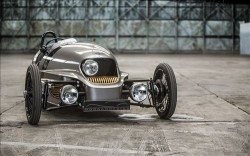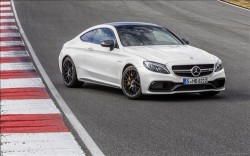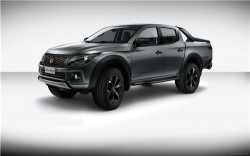Wallpapers
 There is some debate over when MG started. The company itself stated it to be 1924, although the first cars bore both Morris and MG badges and a reference to MG with the octagon badge appears in an Oxford newspaper from November 1923. Others dispute this and believe that MG began trading in 1925.
There is some debate over when MG started. The company itself stated it to be 1924, although the first cars bore both Morris and MG badges and a reference to MG with the octagon badge appears in an Oxford newspaper from November 1923. Others dispute this and believe that MG began trading in 1925.
The first cars which were rebodied Morris models using coachwork from Carbodies of Coventry and were built in premises in Alfred Lane, Oxford but demand soon caused a move to larger premises in Bainton Road in September 1925 sharing space with the Morris radiator works. Continuing expansion meant another move in 1927 to a separate factory in Edmund Road, Cowley, Oxford, near the main Morris factory and for the first time it was possible to include a production line. In 1928 the company had become large enough to warrant an identity separate from the original Morris Garages and the M.G. Car Company Limited was established in March of that year and in October for the first time a stand was taken at the London Motor Show. Space again soon ran out and a search for a permanent home led to the lease of part an old leather factory in Abingdon, Oxfordshire in 1929, gradually taking over more space until production ended in 1980.
Originally owned personally by William Morris, the company was sold to Morris Motors (itself part of the Nuffield Organisation) in 1935; a change that was to have serious consequences for the company, particularly its motor-sport activities. MG was absorbed into the British Motor Corporation in 1952, and latterly British Leyland in 1968. Under BMC, several MG models were no more than badge-engineered versions of other marques, with the main exception being the small MG sports cars.
Amidst a mix of economic, internal and external politics, the Abingdon factory was shut down as part of the ruthless programme of cutbacks necessary to turn BL around after the turbulent times of the 1970s. Though many plants were closed, none created such an uproar among workers, dealers, clubs and customers as this closing did. Years later, Sir Michael Edwardes expressed regret about his decision. Later forms of MGs built by BL's Austin Rover Group were often badge-engineered Austins, and were made at the Longbridge plant. As of 2003, the site of the former Abingdon factory was host to McDonalds and the Thames Valley Police with only the former office block still standing. The headquarters of the MG Car Club is situated next door.
After the Austin Rover Group became the Rover Group in 1986, ownership of MG passed to British Aerospace in 1988 and then in 1994 to BMW. BMW sold the business in 2000 and MG became part of the MG Rover Group based in Longbridge, Birmingham. The practice of selling unique MG sports cars alongside badge-engineered models (by now Rovers) continued. The Group went into receivership in 2005 and car production was suspended on 7 April 2005.
On July 22nd 2005, the Nanjing Automobile Group purchased the rights to the MG name and the assets of the MG Rover Group for £53 million.
In 2006, it was reported that Project Kimber led by David James had entered talks with Nanjing to buy the MG brand in order to produce a range of sports cars based on the discontinued Smart Roadster design by DaimlerChrysler. No agreement was reached and it was later announced that the re-launched Smart Roadster would bear the AC name.
Nanjing restarted production of the MG TF and ZT ranges in early 2007. The TF is being built at Longbridge, while the ZT (now the MG 7) is being assembled in China.
On July 11, 2006 Nanjing announced that production will continue on the TF sports coupé. A new plant will be built in Ardmore, Oklahoma to build the next-generation TF, accounting for roughly 60% of TF output worldwide. A new development center will also be opened in the United States, located at the University of Oklahoma. The Longbridge plant in the UK will continue to build TFs as well, and a third plant in Pukou, at Nanjing Province in China, will produce the ZT and ZR. According to Nanjing, MGs will go on sale in the United States in the early summer of 2008.
The end of 2008 is expected to see the launch of two new cars which will be effective replacements for the MG ZR and MG ZS. Nanjing has not yet released any information as to where these new cars are to be made (or the nameplates they will carry), though they have hinted that these models may also make use of a revived Austin marque in more downmarket versions (in a similar style as the Maestro and Montego ranges back in the 1980s).
Views: 26469
[Source: Wikipedia ]
Latest Wallpapers
Following is the list of recent pictures updates on our site.
DieselStation Social














